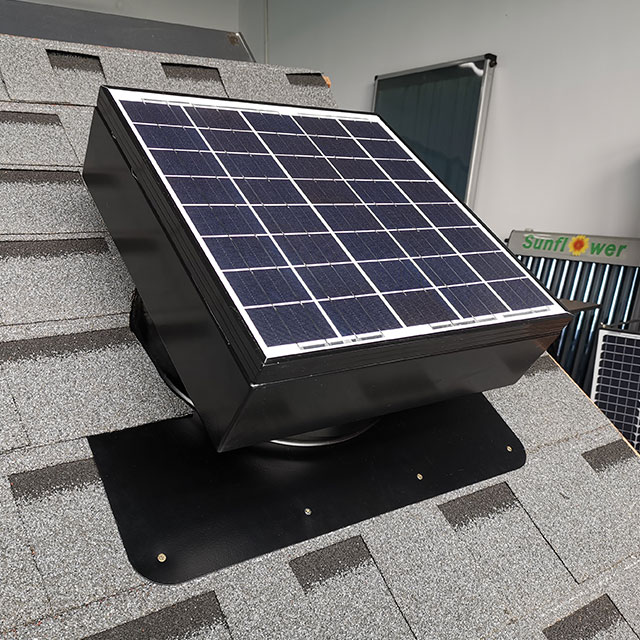Views: 14 Author: Site Editor Publish Time: 2021-06-29 Origin: Site

Here are some useful tips to keep in mind when choosing an attic fan. You'll want to understand the capabilities and functions of the different models, as well as the materials they are constructed from. Most importantly, there are some safety considerations to keep in mind before you start installing a new attic fan.
Materials
Your attic fan must be made of materials that are strong enough to withstand the excessive heat that can build up in your attic. Fans with cheap plastic parts may begin to fail over time in these conditions. In the winter, plastic tends to become very brittle and can easily break the fan blades under normal use.
Instead, choose a fan with metal construction. Both the body and the fan should be constructed of sheet metal and steel, galvanized or painted if possible. These materials are much more stable than plastic at fluctuating temperatures and are well protected from moisture.
Ease of use
If you find it too much trouble to open or close it, then attic ventilation will do you no good. Many whole-house models now come with a remote control that allows you to turn the fan on from the floor below and customize its settings with the touch of a button.
Attic fans are great for homeowners who want to be able to forget that their fan is there. Most come with a programmable thermostat or can be connected to a thermostat that turns the fan on when the attic reaches a set temperature - no need to flip a switch or monitor the attic's temperature yourself.
Safety
A very important aspect to consider when deciding if an attic fan is right for you is safety - especially when installed in the attic around a furnace. An attic fan can create enough airflow to blow out the test light on the furnace. If this happens, the furnace will vent the gas into the attic. At first, the fan will mitigate most of the danger by forcing the gas outside, but once it shuts off, the situation is different. Your attic can fill with gas, which can then seep into the rest of the house, posing a danger to you and your family.
Whole house fans and attic fans are also capable of pulling carbon monoxide home through damaged flue pipes. Be sure your flue is in good working order and that your stove, oven, fireplace and other appliances that use fuel are properly vented.
Ventilation requirements
Knowing the ventilation requirements of the attic fan you choose is important for several reasons.
If the attic fan you choose requires more ventilation than your attic can provide, it will begin to pull air from the conditioned space. This negates the energy efficiency you desire. With too much ventilation, you may find that the fan is not effectively removing hot air from the entire attic.
If your whole house fan is not properly ventilated, it will not work well either. It will fill the attic with hot air, which will prevent it from pulling more air into the space through open windows.
Adjustable Thermostats
As mentioned earlier, an adjustable thermostat allows you to simply set a dial and forget about the fan. When the temperature in the attic reaches a set point, the fan will turn on and begin venting heated air, cooling the attic space.
Likewise, the adjustable thermostat will turn off the fan when the temperature drops back below the set temperature. Not only are they easy to use, but they also help you save money because they don't run when the fans don't need to be on.
Air Volume (CFM) and Square Feet
The higher the CFM (cubic feet per minute), the more airflow the fan can produce. Choose a fan that matches the size of your house or attic for best performance. Too high a CFM and you'll spend more money running the fan than you should. Too low a CFM and you will just be spinning your wheels with little positive impact on the home.
Not all fans will have a CFM rating printed on the package. Instead, you need to look for the number of square feet the fan is used for. This detail is especially important when choosing a whole house fan.
Noise Levels
Noise: The bane of all whole-house fan owners since the introduction of whole-house fans. But not anymore. Newer, smaller and more efficient models can operate at much quieter levels, keeping the house cool in relative silence.
If you have an older fan installed in your home, replacing it with a newer whole-house fan will provide a noticeable change in noise. Newer models have smaller fans, produce less turbulence, and their motors are better tuned than previous larger house fans.